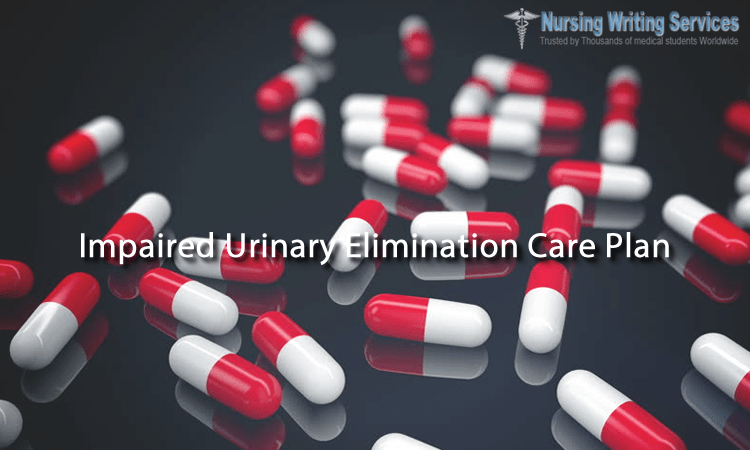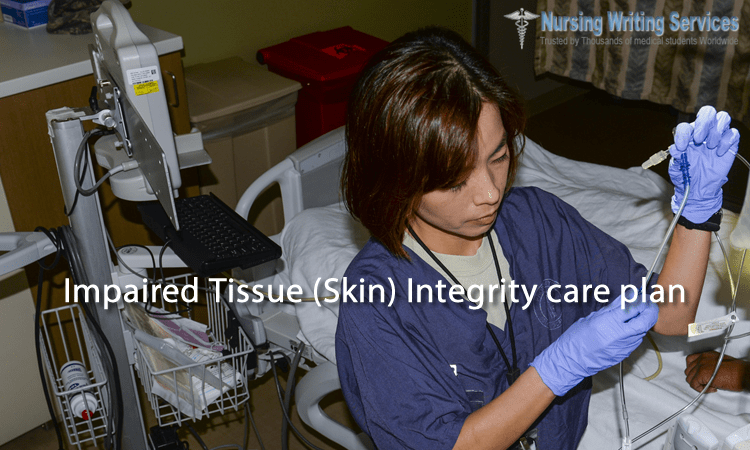
Reflex urinary incontinence is an involuntary loss of urine at intervals that are somehow predictable as it occurs when the bladder is full to a particular volume. It involves dysfunction of the neurological control mechanisms that help in controlling sphincter relaxation and detrusor contraction. It is essential to write a Reflex Urinary Incontinence Care Plan to help improve the medical condition and quality of life for the patient. It saves time and resources for nurses to find Reflex Urinary Incontinence Care Plan writing help to come up with a good and well structured nursing plans.
Central nervous system problem is often the likely cause. Patients suffering from brain tumors, Parkinson's disease, side effects of a stroke and spinal injuries are more likely to have reflex urinary incontinence.
Reflex Urinary Incontinence Care Plan Diagnosis
It is essential to write a care plan that includes ways to identify the existence of reflex urinary incontinence that stands out due to the presence of these signs and symptoms.
- Anticipated pattern of urination
- Failure to initiate or sustain voiding
- Lack of sensation of bladder fullness
- No urge to void
Reflex Urinary Incontinence Care Plan Goals and Outcomes
A care plan should aim to achieve certain goals that help to improve the medical condition and quality of life for the patient.
The common goals and outcomes for a caregiver are to help the patient to:
- Establish regular voiding pattern
- Eliminate episodes of incontinence
Reflex Urinary Incontinence Care Plan Assessment
A caregiver plan should include a comprehensive plan to determine the status of reflex incontinence and likely cause better interventions. It is vital for the caregiver to perform these assessments to establish the status of incontinence:
Ascertain if the patient recognizes the need to urinate: Patient suffering from neurological disorders might not get the sense the need to void. The usually cause damage to the sensory fibers, and the patient will not have the sensation of urinating need.
Determine volume of urine for each voiding: Urine volumes of reflex incontinence are consistent. If they are inconsistent, there could be another type of incontinence.
Find results of urodynamic studies: A caregiver can review these results by using a cystometrogram to measure fluid volumes bladder pressures during filling, storage and finally urination. An electromyography records detrusor activity during urination. These test results are essential in revealing the point of coordination between the sphincter activity and detrusor muscle.
Find the urination pattern: A caregiver should determine the voiding pattern based on the fluid intake and subsequent voiding to use it as a basis for planning a bladders diary as well as management techniques.
Reflex Urinary Incontinence Care Plan Nursing Intervention
The final intention of a care plan should be to help the patient in recovering from reflex urinary incontinence through these therapeutic interventions.
Encourage voiding at programmed intervals before the predictable urination
When a patient urinates at regular intervals about her or her voiding patterns, it lowers the likelihood of uncontrolled incontinence.
Introduce the patient to absorbent pads and explain the purpose
Absorbent pads are an excellent way to contain urine without spelling to the clothing when the patient is in a public gathering. A nurse should show and inform the client about the needs to change the pads regularly to prevent the possible skin irritation due to prolonged exposure the chemicals in the urine and moisture.
Catheterize, the patient
If involuntary urination is impossible to achieve, a caregiver should consider catheterizing the patient at regular intervals. Emptying the bladder regularly reduces episodes of incontinence. It is paramount to maintain hygiene as indwelling catheters are a high risk of infections.
Explain the benefit of an external catheter to male patients
An external catheter connected to a gravity drainage device allows the patient to stay dry. It is also essential to demonstrate intermittent catheterization to the patient for use in draining the bladder at specific periods.
A caregiver will achieve the desired outcomes by working loosely with the patient, members of the family or caretakers and a facility to establish and manage a predictable voiding program. Participation in joint care promotes appropriate management of the clients even when the caregiver is a way and imparts more knowledge.
Reflex Urinary Incontinence Care Plan Writing Help
Coming up with a clear nursing care plan may be a bit challenging for the nurse on duty. For this reason, most of the nurses seek Reflex Urinary Incontinence Care Plan writing help online for a good and detailed care plan. We offer exclusive Nursing Care Plans Writing Services to nurses and nursing students at affordable rates. Our Nursing care plans are original, structural and well-written to provide an easy guide to assessment and treatment for patients. Hire our competent writers for an affordable Reflex Urinary Incontinence Care Plan writing help online with 100% money guarantee.





